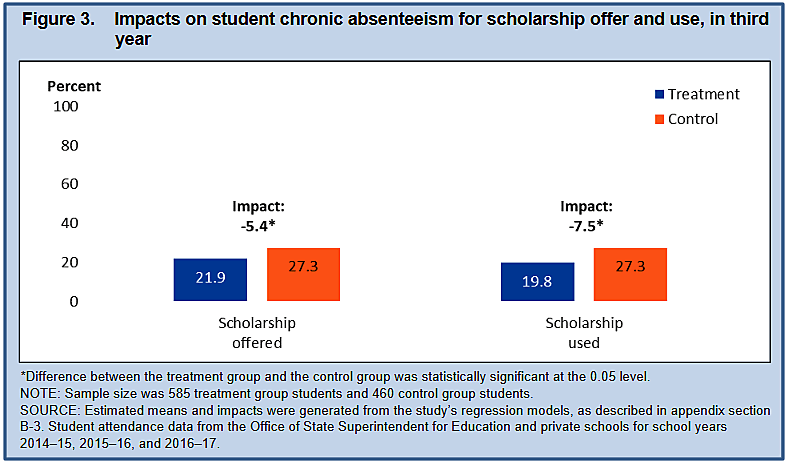Standardized test scores aren’t what they used to be. From A Nation at Risk in 1983 to Common Core around 2010, they were close to exclusively how we assessed whether students and schools were succeeding. But over the years the monomaniacal focus on test scores increasingly grated on schools and families, and with the Common Core threatening to put everyone on the road to the exact same standards and tests, there was a political revolt. At about the same time an empirical revolt was brewing, with increasing evidence that schools’ test scores may not correlate all that well with other important outcomes, ranging from college attendance to health. Which brings us to the latest evaluation of the Washington, DC, voucher program.
After the first two reports in the three-installment series found negative test score effects it was easy to be disappointed, even while realizing that test scores are very cramped measures, and the DC voucher program was functioning in a district where choice, once you add in charter schools and choice among traditional public schools, was the norm. Choice is still the norm—78 percent of students who applied for vouchers but did not receive them nonetheless went to schools other than those to which they were assigned—but now test scores for DC voucher students are statistically indistinguishable from those of applicants who did not receive vouchers.
So DC vouchers are a test-score wash. But they are a plus in many other areas, including reducing chronic absenteeism (see chart above), increasing student satisfaction, and making students feel safe. Meanwhile, they have no overall negative impacts. And all this at a fraction of the cost of traditional DC public schools. The voucher cap is $9,022 for grades K‑8 and $13,534 for 9–12, while traditional DC publics spend around $27,000 per student.
All in the world of school choice test scores is not good – see the most recent assessment of Louisiana’s particularly troubled voucher program. But more and more we are seeing that test scores are not the super-measures we thought—or at least acted like—they were, and school choice is—and must be—about much more.

